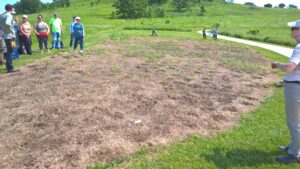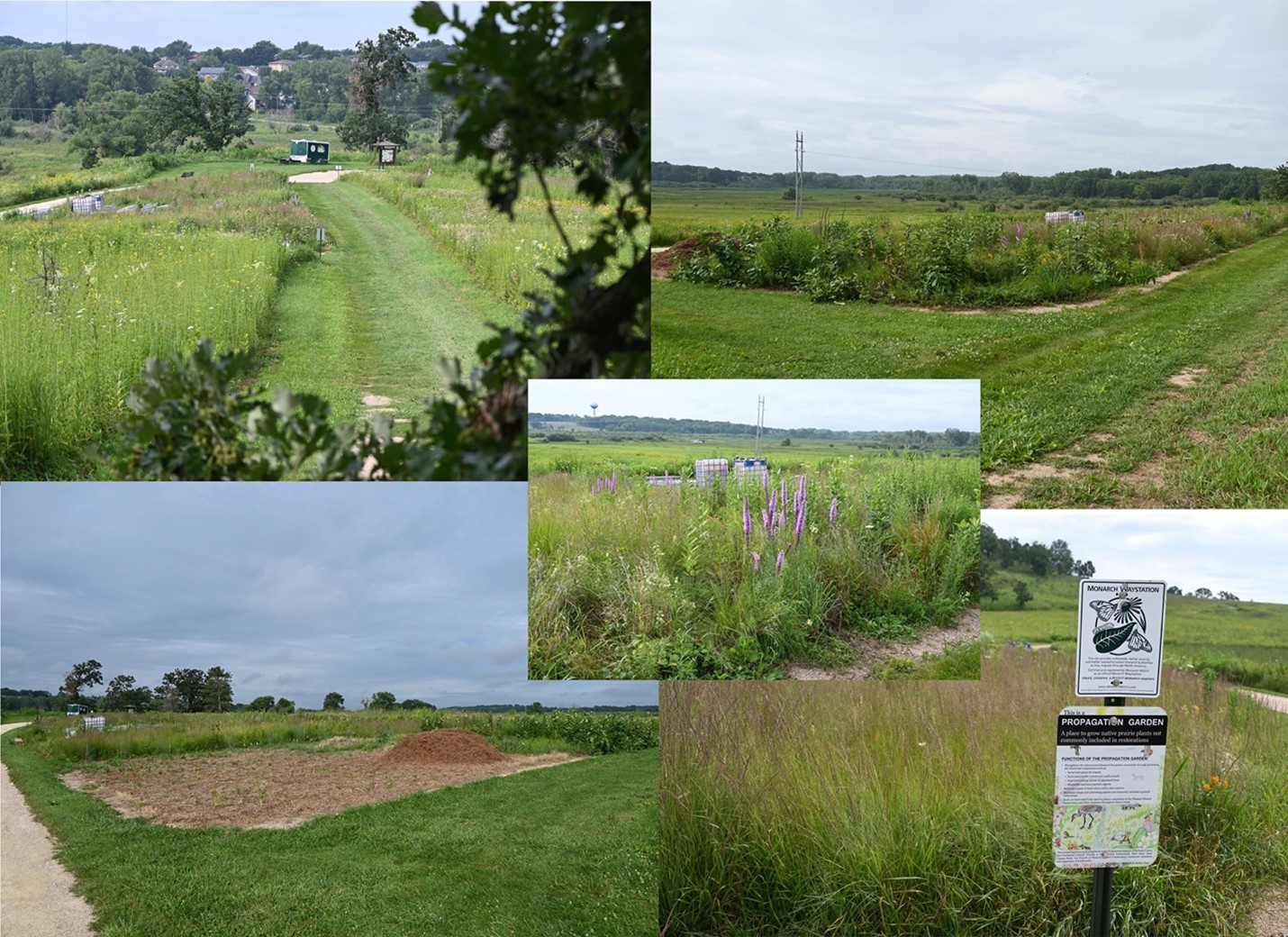The thriving propagation garden at Pheasant Branch Conservancy (photo by Chris Kehler)
Article by: Janice P. Kehler, FOPBC Board Member and Restoration & Management Committee Member
In 1949, Aldo Leopold described the “prairie birthday” as a culmination of events from April to September when wild native plants bloom. This essay was among many published as part of his classic work A Sand County Almanac, where he called for humankind to embrace the natural world as part of a broader community—a legacy that has found a foothold in the story of the propagation garden initiated by the Friends of the Pheasant Branch Conservancy.

Beginning in 2019, a group of volunteers from the Friends decided to build the garden on a grassy, weedy parking lot that was rarely used. Their vision was to nurture native species that would eventually become part of the restoration program and to share excess plants and seeds with other communities—an idea guided by the expertise of land manager Rob Schubert and dedicated volunteer Susan Gruber. So, on June 15, 2019, the first planting occurred, consisting of 1,088 grasses and sedges purchased through a Dane County Environmental Council grant. A second round of planting went forward with plants from Agricol, purchased through grants from Friends of Dane County Parks and Plant Dane. The garden came to life, welcomed by insects, butterflies, bees, and visitors walking past.
But just like any new life, stewardship was essential to the garden’s survival. Keeping the weeds at bay brought on more volunteers who weeded the garden until the native plants could stake out their space. Under Rob’s guidance, we started growing native plants from seed in 2020 and have continued this practice. Wooden frames were built to provide a climate to incubate seeds, protect seedlings, and keep growing plants safe from mice and rabbits; raised beds were built to help the more fragile plants survive in the outside world.
Large water cubes were installed, and with the help of local firefighters, who periodically filled the cubes, a water source was now close at hand. Eventually, all the garden sections were planted; the last was this spring. This year, we produced more seedlings than ever before; many will be given away to help other groups start native plant gardens. The plan is to continue to birth new plants and interplant them in areas of the garden to diversify the native species population.
Most weeks between April and September, volunteers meet at the garden on Wednesdays and Saturdays to tackle its ever-changing needs. Rainfall, hot, steamy weather, and mosquitoes present challenges, but we always find a way to enjoy the work, no doubt rewarded by our hilltop garden’s colorful, changing landscape.
In a few short years, the garden has thrived, expanding the flora of our prairie landscape as we worked and discovered the vitality of our native species—our story of the prairie birthday that resonates with the broader community envisioned by Aldo Leopold so many years ago.

